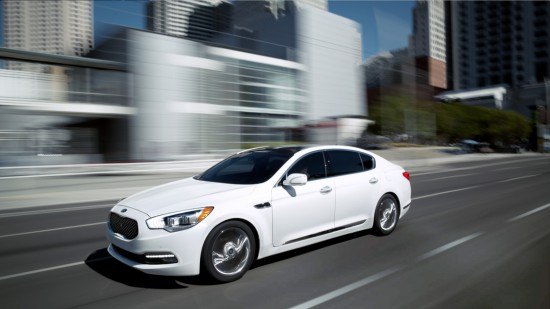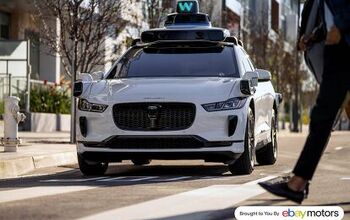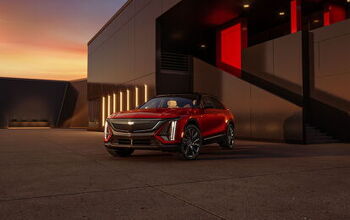Rare Kia K900 Is Becoming Rarer
When dining at a steakhouse, my father always told me, make sure you ask for your beef to be grilled longer than you would at home, because restaurants always hastily send the food to your table. You want medium-rare? Ask for medium. Want medium? Ask for medium-well.
With the K900, a V8-engined sedan closely related to the Hyundai Equus, Kia asked for rare, and the chef that is the American car consumer collective is sending it out to the table even rarer.
The K900 has only been on sale in the United States since March, but it’s quickly becoming simple to draw conclusions regarding its desirability. Sales peaked at 260 units in its first full month on the market, April, and have declined (month-over-month) ever since. May volume totalled 227 K900s, then 224 in June, 132 in July, 102 in September, and 56 in September.
Keep in mind, we never expected this to be an S-Class-like seller. (Mercedes-Benz USA is selling nearly 1900 S-Classes per month in 2014.) Nor did we assume the K900 would sell like far less popular mid-rung luxury cars such as the Audi A6, sales of which are up 9% to 17,167 this year. In fact, the standards set by the established Hyundai Equus seemed lofty.
But this gradual decline to near nothingness is nevertheless disappointing when one considers the initial expectations for 5000 annual K900 sales. Cars.com shows 626 K900s currently inventoried. The bulk of that inventory was available at this time a month ago.
Kia is sensitive to the sight of low numbers in its monthly sales release. Brand-wide sales are up 7% this year because of vehicles like the Soul (115,579 year-to-date sales), Forte (53,793), and Sportage (32,643). Kia’s Cadenza, at approximately 850 units per month, generates 28% greater volume than the Hyundai Azera. So with two asterisks, Kia USA points out: “2015 K900 V8 available in select trims and in select markets with limited availability.”
That’s a double-drop of “select” and a “limited” mention, to boot.
And we’re not going to argue with their point. The K900 is supposed to be rare. Moreover, fewer than one-third of the brand’s dealers are eligible to sell the car.
Yet when it quickly becomes rarer than rare – it was outsold by the Scion iQ, Cadillac ELR, Chevrolet SS, Dodge Viper, cancelled Jaguar XK, electric Mercedes-Benz B-Class, defunct Acura TSX, and the BMW i8 in September – the K900 quickly ceases to be relevant for the purpose of brand-building.
It’s easy to make a case that the Hyundai Genesis has elevated the Hyundai brand as a whole. If potential Forte and Optima buyers never even see a K900, can that car pull off the same trick at Kia?
More by Timothy Cain
Latest Car Reviews
Read moreLatest Product Reviews
Read moreRecent Comments
- Lou_BC Well, I'd be impressed if this was in a ZR2. LOL
- Lou_BC This is my shocked face 😲 Hope formatting doesn't fook this up LOL
- Lou_BC Junior? Would that be a Beta Romeo?
- Lou_BC Gotta fix that formatting problem. What a pile of bullsh!t. Are longer posts costing TTAC money? FOOK
- Lou_BC 1.Honda: 6,334,825 vehicles potentially affected2.Ford: 6,152,6143.Kia America: 3,110,4474.Chrysler: 2,732,3985.General Motors: 2,021,0336.Nissan North America: 1,804,4437.Mercedes-Benz USA: 478,1738.Volkswagen Group of America: 453,7639.BMW of North America: 340,24910.Daimler Trucks North America: 261,959


































Comments
Join the conversation
Due to the fact that faster-than-average depreciation is imminent, I have a feeling that the K900 will be quickly destined to BHPH lots. Just like with the Hyundai XG and the Kia Amanti, and to a lesser extent, the Genesis. I predict that they will be maintenance nightmares to their eventual owners who will not be able to afford the upkeep, and this is especially an issue since Kia is new to the V8 RWD game and who knows how the drivetrain will hold up. Your typical BHPH customer that will be driving these very soon will see past reality and will get in over their heads. The typical will happen: the paint job will be faded, the interior will be trashed, the engine will burn oil, and then shortly after, the cars will quickly disappear off of the roads with no trace.
The problem for Kia with the K900 is that it did not have a model slotted underneath like Hyundai had with the Genesis (which set the stage for the Equus). Kia tried to do it with the Cadenza (making it more of an ES than an Avalon competitor) but that didn't quite work. Optimally, Kia should have waited to launch the K900 until the next gen model - which gets the new platform underpinning the Genesis (but stretched some) and available AWD - since by that time, the GT already have hit the marketplace. But sans the GT, Kia made several missteps. 1. Don't spend most of your K900 advertising $$ on expensive Super Bowl commercials. Yes - live sports is one of the few programming that retains a large no. of viewers for commercials, but the dearth of advertising since then has hurt (most people probably don't know that the K900 exists). 2. Should have launched the lower priced V6 model at around the same time as the V8 model. The lower priced V6 trim would have increased sales volume from the start and there was no reason not to do so. The fact that the V6 is still not yet available 7 months from launch is just ridiculous (esp. since Kia blew most of the K900's ad budget back in February). 3. Kia should have offered a lower priced base model for the V8 (not everyone wants all the tech gadgets) and should do so for the V6 when it launches. LeBron James supposedly got intrigued by the K900 and picked one up and now has a marketing partnership with Kia for the K900. While I am a bit dubious about celebrity-centric marketing when it comes to things like autos, any bit of extra publicity for the K900 helps as its biggest problem is that most have no idea that it exists. The launch of the V6 model should help sales (assuming that Kia will spend some on marketing at that point) some, but the K900 won't gain any real traction in sales until the next gen model when it should have the companion GT model (presumably will be the K800).